Basic Dermatology Vocabulary
Article Sections
Introduction
Dermatologic terminology is essential for accurate communication and clinical reasoning. Dermatologic descriptions typically incorporate the following elements:
- Primary morphology (eg, macule, papule).
- Size.
- Demarcation (eg, well demarcated, poorly demarcated).
- Color.
- Secondary morphology (eg, erosion, ulceration).
- Distribution (eg, photodistributive, generalized).
This article provides an overview of skin anatomy and the terminology used to describe skin rashes and cutaneous findings.
Structures of the skin
The skin consists of 3 primary layers (Figure 1): epidermis, dermis, and subcutaneous tissue.
EpidermisThe outermost layer, the epidermis, is composed primarily of keratinocytes (Figure 2). It includes (from deep to superficial):
- Stratum basale: Composed of a single layer of basal keratinocytes undergoing mitosis, melanocytes (which give skin its color), and Merkel cells (mechanoreceptors involved in the sensation of touch) (Figure 3
Continue Learning with UWorld
Get the full Basic Dermatology Vocabulary article plus rich visuals, real-world cases, and in-depth insights from medical experts, all available through the UWorld Medical Library.
Figures
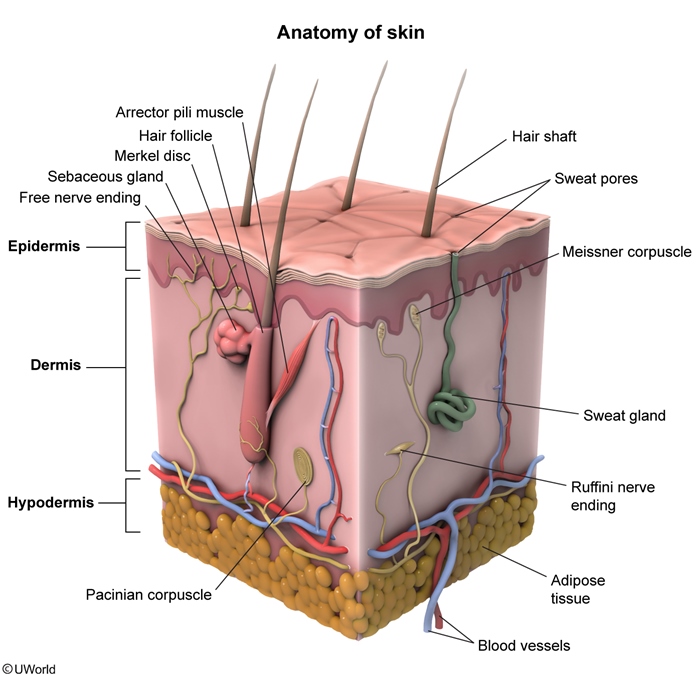
Figure 1
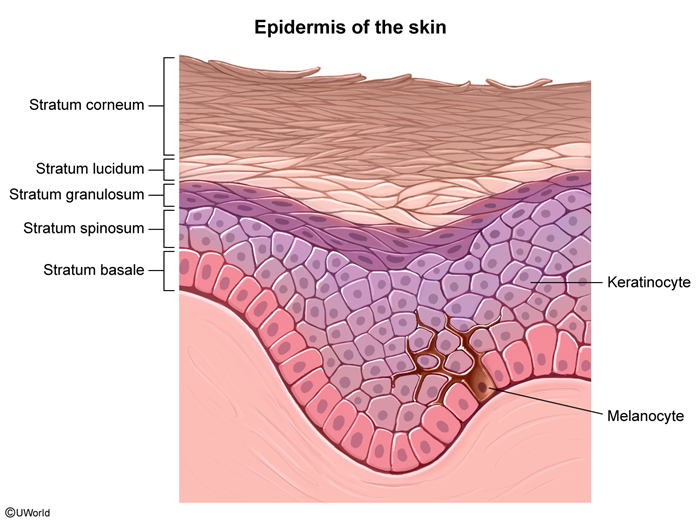
Figure 2
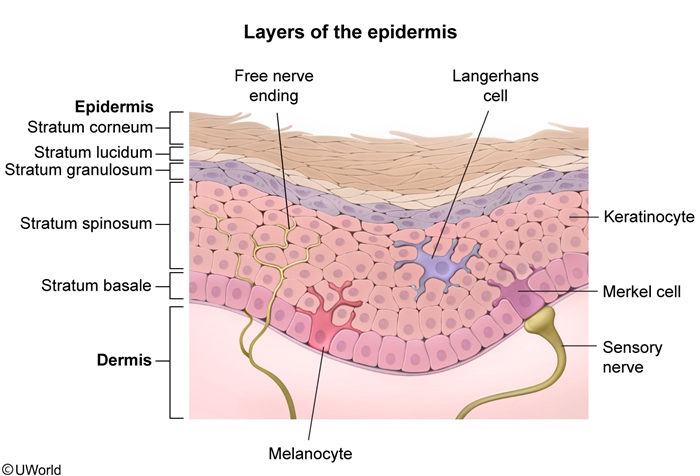
Figure 3
Images
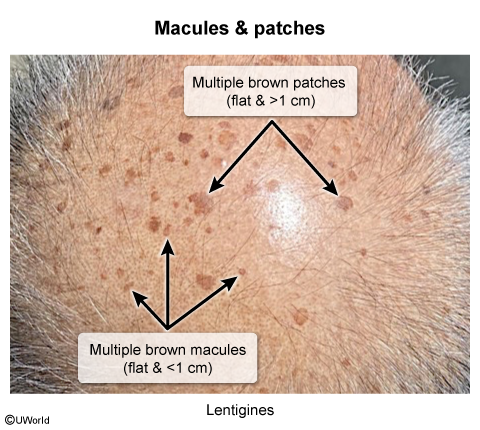
Image 1
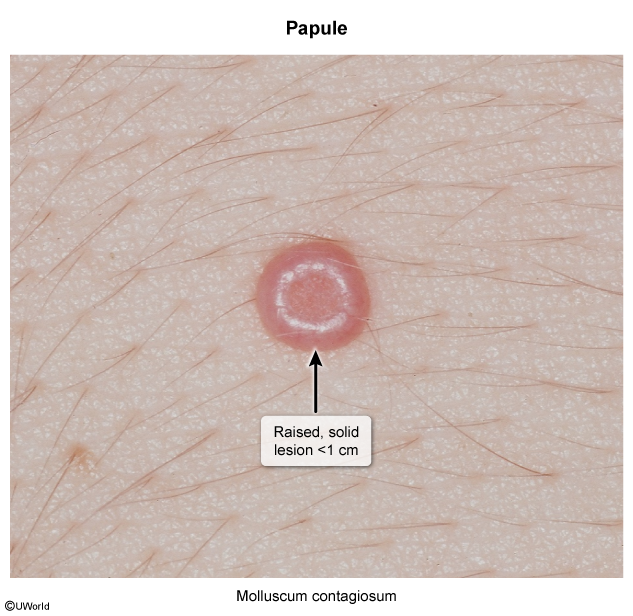
Image 2
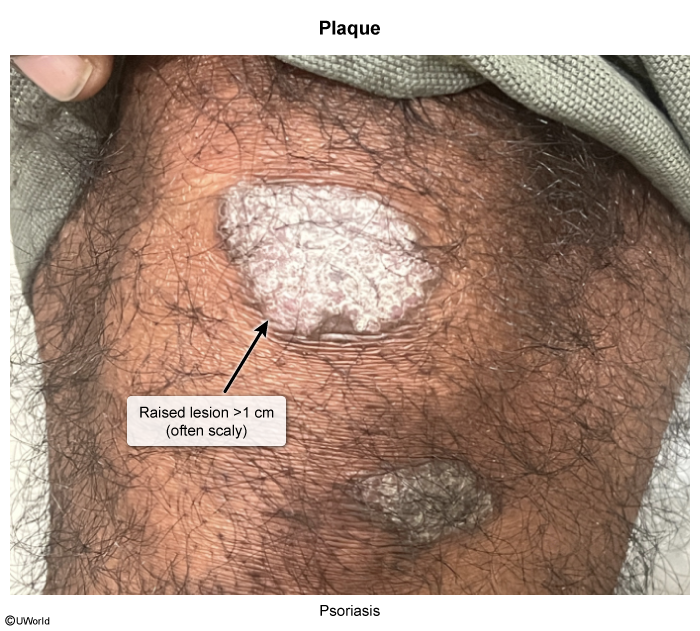
Image 3